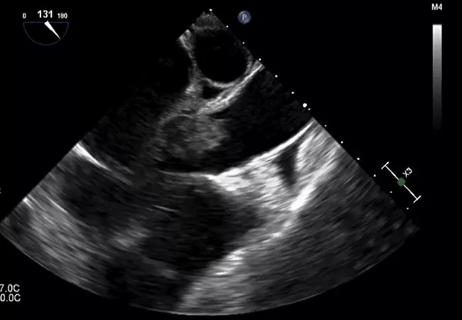A snapshot of the 2020 GINA report

Editor’s note: This is an abridged version of an article originally published in the Cleveland Clinic Journal of Medicine. The article in its entirety, including a complete list of references, can be found here.
Cleveland Clinic is a non-profit academic medical center. Advertising on our site helps support our mission. We do not endorse non-Cleveland Clinic products or services. Policy
By Kavya Kommaraju, MD, and Mani Latifi, MD
Asthma, as defined by the Global Strategy for Asthma Management and Prevention (GINA), is a heterogeneous disease characterized by chronic airway inflammation. It is hallmarked by respiratory symptoms such as wheezing, shortness of breath, chest tightness or cough that vary over time and in intensity, together with variable expiratory airflow limitation.
In adults, variable expiratory airflow limitation can be confirmed several ways:
Recognized clinical phenotypes include allergic asthma, nonallergic asthma, adult-onset (late-onset) asthma, asthma with persistent airflow limitation and asthma with obesity. Asthma severity (mild, moderate, severe) is classified based on frequency of day and night symptoms, as well as on the level of stepwise treatment required to control symptoms and prevent exacerbations.
The field of asthma has evolved significantly during the last several years. This review of the GINA 2019 update focuses on changes in the management of asthma in adult outpatients. We use the following abbreviations: short-acting beta-agonist (SABA), long-acting beta-agonist (LABA), inhaled corticosteroid (ICS), and oral corticosteroid (OCS).
The GINA Science Committee was established in 2002 and is composed of voluntary members who are leaders in both adult and childhood asthma research. The committee meets biannually with the American Thoracic Society (ATS) and European Respiratory Society (ERS) to review the latest in asthma research in order to release new recommendations annually.
For these recommendations, a PubMed literature search covering approximately 18 months yielded 1,137 clinical trials or meta-analysis publications of which 906 were screened out for duplicates, relevance, or quality. Each of the remaining 231 publications was reviewed by at least two committee members for overall scientific impact. Of those, 123 were subsequently discussed in the biannual GINA Science Committee meetings in 2018 for consideration of inclusion in the annual guidelines.
Of note, any new therapy or indication required regulatory approval by at least one agency and at least two good-quality studies in suitable populations before committee recommendation. Off-label recommendations were made for existing therapies if the committee found suitable supportive evidence. For these off-label recommendations, the committee emphasized that clinicians should use their professional judgment and take into account existing local and national guidelines.
Monotherapy with SABA on an as-needed basis is no longer recommended as the initial therapy for mild asthma because it increases the risk of severe exacerbations and asthma-related deaths. To decrease these risks, all adults with asthma should receive combination therapy with an ICS and an LABA on an as-needed basis for mild asthma or regular daily use for moderate or severe asthma. The recommended option is low-dose budesonide-formoterol, or beclomethasone-formoterol as an alternative. If an SABA is used, it should be simultaneously combined with a low-dose ICS.
The expected clinical impact of the latest guidelines is a decreased incidence of severe asthma exacerbations and asthma-related deaths globally.
It should be noted that until 2017, ICS-LABA combinations had a boxed warning from the FDA based on early LABA trials (Serevent Nationwide Surveillance study and the Salmeterol Multicenter Asthma Research trial) that showed increased risk of serious adverse asthma outcomes (death, hospitalization, intubation).
Due to these concerns, the FDA required manufacturer-conducted noninferiority post-market safety trials for ICS-LABA combinations vs ICS alone. Four trials (three adult and one pediatric) enrolling approximately 45,000 participants were conducted and examined fluticasone-salmeterol vs. fluticasone, budesonide-formoterol vs. budesonide and mometasone-formoterol vs. mometasone for efficacy and the aforementioned serious asthma outcomes.
In summary, these trials found that the ICS-LABA combinations were effective in reducing asthma exacerbations requiring corticosteroids and did not significantly increase the risk of serious adverse asthma outcomes. Despite the removal of the boxed warning, no ICS-LABA combination has an FDA-approved indication for treating acute bronchospasm on an as-needed basis, as the GINA 2019 guidelines recommended.
The annual GINA report is endorsed by the ATS and ERS. After the GINA 2019 report was published, the ATS and ERS published a joint guideline on the management of severe asthma in January 2020. Prior to this, their last independent publication was in 2014, which was also limited to the description of severe asthma. More recently, the National Heart Lung and Blood Institute (NHLBI) released updated guidelines in December 2020. Though the full review of the evidence behind those guidelines is beyond the scope of this article, a key difference in recommendations should be noted. The NHLBI 2020 guidelines still recommend as-needed SABA as the preferred initial treatment for intermittent asthma, with as-needed or daily low-dose ICS-LABA reserved for step three. The American College of Chest Physicians has no published asthma guidelines.
Combination ICS-LABA should be considered for all patients with asthma, and for select patients with mild asthma this should be considered on an as-needed basis replacing SABA as the sole therapy. The consideration for this change should be based on shared decision-making with each patient. Providers should discuss the risks and benefits of sole SABA therapy with patients, while acknowledging that symptoms may have been well controlled without exacerbations for many years on the patient’s current regimen. Continued provider and patient education is a key for population-level success of any new society recommendations.
Availability and affordability of ICS-LABA combinations may limit widespread adoption of these recommendations. In these cases, GINA recommends that low-dose ICS be used when SABA is used. Timing of FDA approval for any ICS-LABA combination for an as-needed indication may influence medication coverage practices and, ultimately, affordability.
Dr. Kommaraju is a resident in internal medicine. Dr. Latifi is staff in the Respiratory Institute.

OMT may be right for some with Graves’ eye disease

Perserverance may depend on several specifics, including medication type, insurance coverage and medium-term weight loss

Integrate climate-related health information and counseling into your practice

Physicians discuss a specific case example, and PICC pros, cons and alternatives

A review of available interventions

Abstinence from combustibles, dependence on vaping

An historical view of the disease

Careful history and clinical observation are still valuable tools